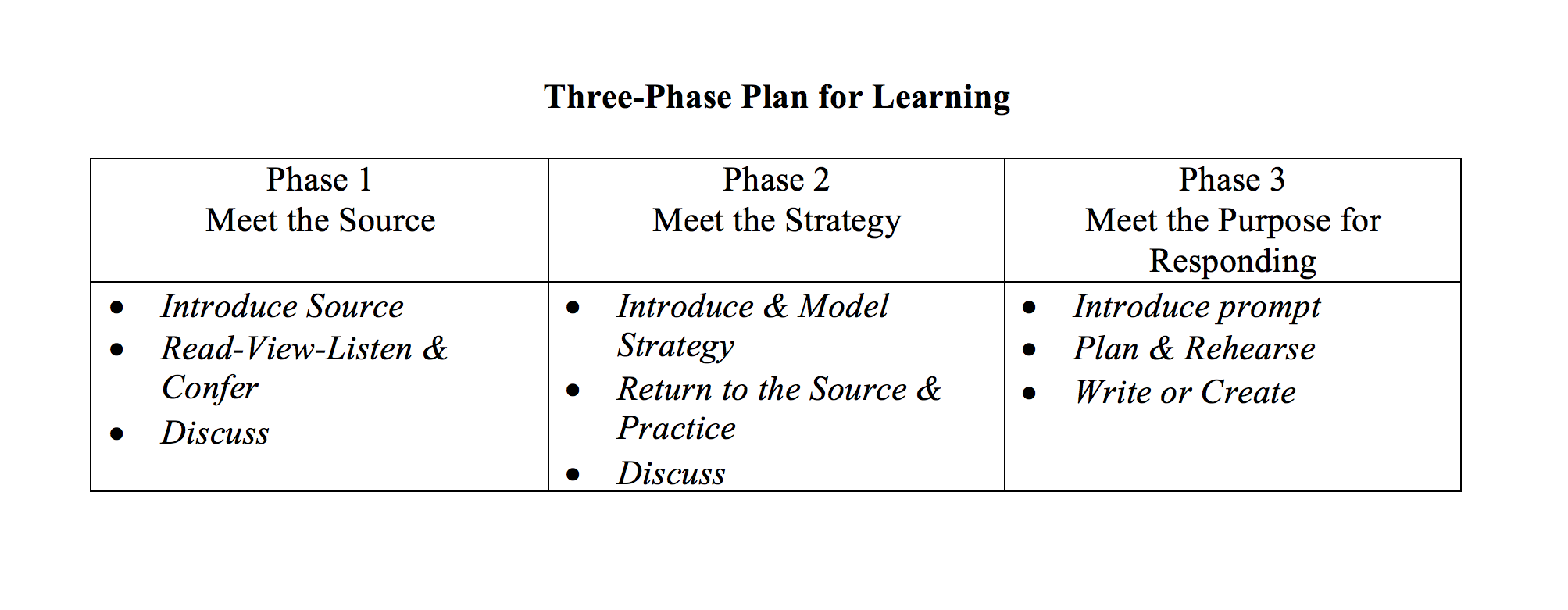Below is a guide I’ve developed for planning and teaching with informational sources. Each “phase” can be one or more lesson periods (20-40 minutes) based on the needs of your students. My hope is to make teaching with informational sources (texts, video, infographics, etc) more manageable. There’s so much we can do with these sources, but there’s value in a regular routine focused on helping students develop a deeper understanding of a source (guided reading/writing of sorts ;). This plan tries to provide a model for that. Here’s a link to the full plan.
During Phase One, you introduce the source to the students and they have an opportunity to read, view or listen to that source. As they engage with the source, you lean in to confer and check for understanding. Then you close with a discussion of the content they learned. Your goal is for the students to get a grasp of the source as a whole.
During Phase Two, you teach a strategy or a set of strategies that supports students in closely reading-viewing-listening to a part of the source or if the source is short, the whole source. An example of a strategy is teaching the students how to self-monitor by coding for what they already know, what’s new information or what they do not understand. Another strategy is using the pasta analogy to help students determine what is important as they underline and annotate a source for evidence that supports a main idea. This may occur with only a part of the source. Chances are–if the students understand a part of the source really well, they will understand the whole source better.
During Phase Three, students write or create a response to the source. This can be very short–a few sentences or a quick sketch of an infographic or it can be a little longer like a “Hey, Mom” letter or they might just practice discussing in detail what they learned–orally responding. This serves to deepen their understanding of the source.
What I’ve given you are the basics. There’s so much more I’d like to say, but hope to blog about. (I’m also working on a new edition of my first book Close Reading of Informational Sources.)
Hope this helps.
S
UPDATED 1_16_24

